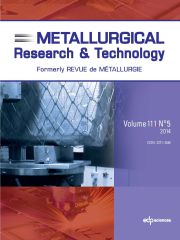Crossref Citations
This article has been cited by the following publications. This list is generated based on data provided by
Crossref.
Nordelöf, Anders
Messagie, Maarten
Tillman, Anne-Marie
Ljunggren Söderman, Maria
and
Van Mierlo, Joeri
2014.
Environmental impacts of hybrid, plug-in hybrid, and battery electric vehicles—what can we learn from life cycle assessment?.
The International Journal of Life Cycle Assessment,
Vol. 19,
Issue. 11,
p.
1866.
Wender, Ben A.
Foley, Rider W.
Hottle, Troy A.
Sadowski, Jathan
Prado-Lopez, Valentina
Eisenberg, Daniel A.
Laurin, Lise
and
Seager, Thomas P.
2014.
Anticipatory life-cycle assessment for responsible research and innovation.
Journal of Responsible Innovation,
Vol. 1,
Issue. 2,
p.
200.
Ahmadi, Leila
Yip, Arthur
Fowler, Michael
Young, Steven B.
and
Fraser, Roydon A.
2014.
Environmental feasibility of re-use of electric vehicle batteries.
Sustainable Energy Technologies and Assessments,
Vol. 6,
Issue. ,
p.
64.
Hanisch, Christian
Loellhoeffel, Thomas
Diekmann, Jan
Markley, Kely Jo
Haselrieder, Wolfgang
and
Kwade, Arno
2015.
Recycling of lithium-ion batteries: a novel method to separate coating and foil of electrodes.
Journal of Cleaner Production,
Vol. 108,
Issue. ,
p.
301.
Hanisch, Christian
Diekmann, Jan
Stieger, Alexander
Haselrieder, Wolfgang
and
Kwade, Arno
2015.
Handbook of Clean Energy Systems.
p.
1.
Pampal, Esra Serife
Stojanovska, Elena
Simon, Bálint
and
Kilic, Ali
2015.
A review of nanofibrous structures in lithium ion batteries.
Journal of Power Sources,
Vol. 300,
Issue. ,
p.
199.
Prasath, Arul
and
Elumalai, Perumal
2016.
Extraction of Nanostructured SiO2 from Glass Waste: A Potential Anode Source for Lithium–ion Batteries.
ChemistrySelect,
Vol. 1,
Issue. 12,
p.
3363.
Ahmadi, Leila
Young, Steven B.
Fowler, Michael
Fraser, Roydon A.
and
Achachlouei, Mohammad Ahmadi
2017.
A cascaded life cycle: reuse of electric vehicle lithium-ion battery packs in energy storage systems.
The International Journal of Life Cycle Assessment,
Vol. 22,
Issue. 1,
p.
111.
Lombardi, Lidia
Tribioli, Laura
Cozzolino, Raffaello
and
Bella, Gino
2017.
Comparative environmental assessment of conventional, electric, hybrid, and fuel cell powertrains based on LCA.
The International Journal of Life Cycle Assessment,
Vol. 22,
Issue. 12,
p.
1989.
Peters, Jens F.
Baumann, Manuel
Zimmermann, Benedikt
Braun, Jessica
and
Weil, Marcel
2017.
The environmental impact of Li-Ion batteries and the role of key parameters – A review.
Renewable and Sustainable Energy Reviews,
Vol. 67,
Issue. ,
p.
491.
Bilich, Andrew
Langham, Kevin
Geyer, Roland
Goyal, Love
Hansen, James
Krishnan, Anjana
Bergesen, Joseph
and
Sinha, Parikhit
2017.
Life Cycle Assessment of Solar Photovoltaic Microgrid Systems in Off-Grid Communities.
Environmental Science & Technology,
Vol. 51,
Issue. 2,
p.
1043.
Yin, Renshu
Hu, Shuhan
and
Yang, Yang
2019.
Life cycle inventories of the commonly used materials for lithium-ion batteries in China.
Journal of Cleaner Production,
Vol. 227,
Issue. ,
p.
960.
Bobba, Silvia
Mathieux, Fabrice
and
Blengini, Gian Andrea
2019.
How will second-use of batteries affect stocks and flows in the EU? A model for traction Li-ion batteries.
Resources, Conservation and Recycling,
Vol. 145,
Issue. ,
p.
279.
Xiong, Siqin
Ji, Junping
and
Ma, Xiaoming
2019.
Comparative Life Cycle Energy and GHG Emission Analysis for BEVs and PhEVs: A Case Study in China.
Energies,
Vol. 12,
Issue. 5,
p.
834.
Pellow, Matthew A.
Ambrose, Hanjiro
Mulvaney, Dustin
Betita, Rick
and
Shaw, Stephanie
2020.
Research gaps in environmental life cycle assessments of lithium ion batteries for grid-scale stationary energy storage systems: End-of-life options and other issues.
Sustainable Materials and Technologies,
Vol. 23,
Issue. ,
p.
e00120.
Tolomeo, Rosario
De Feo, Giovanni
Adami, Renata
and
Sesti Osséo, Libero
2020.
Application of Life Cycle Assessment to Lithium Ion Batteries in the Automotive Sector.
Sustainability,
Vol. 12,
Issue. 11,
p.
4628.
Costa, C.M.
Barbosa, J.C.
Gonçalves, R.
Castro, H.
Campo, F.J. Del
and
Lanceros-Méndez, S.
2021.
Recycling and environmental issues of lithium-ion batteries: Advances, challenges and opportunities.
Energy Storage Materials,
Vol. 37,
Issue. ,
p.
433.
Zhao, Enoch
Walker, Paul D.
Surawski, Nic C.
and
Bennett, Nick S.
2021.
Assessing the life cycle cumulative energy demand and greenhouse gas emissions of lithium-ion batteries.
Journal of Energy Storage,
Vol. 43,
Issue. ,
p.
103193.
Tu, Qingshi
and
Hertwich, Edgar G.
2022.
A mechanistic model to link technical specifications of vehicle end‐of‐life treatment with the potential of closed‐loop recycling of post‐consumer scrap alloys.
Journal of Industrial Ecology,
Vol. 26,
Issue. 3,
p.
704.
Matos, Cristina T.
Mathieux, Fabrice
Ciacci, Luca
Lundhaug, Maren Cathrine
León, María Fernanda Godoy
Müller, Daniel Beat
Dewulf, Jo
Georgitzikis, Konstantinos
and
Huisman, Jaco
2022.
Material system analysis: A novel multilayer system approach to correlate EU flows and stocks of Li‐ion batteries and their raw materials.
Journal of Industrial Ecology,
Vol. 26,
Issue. 4,
p.
1261.

